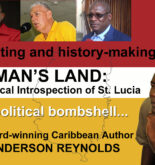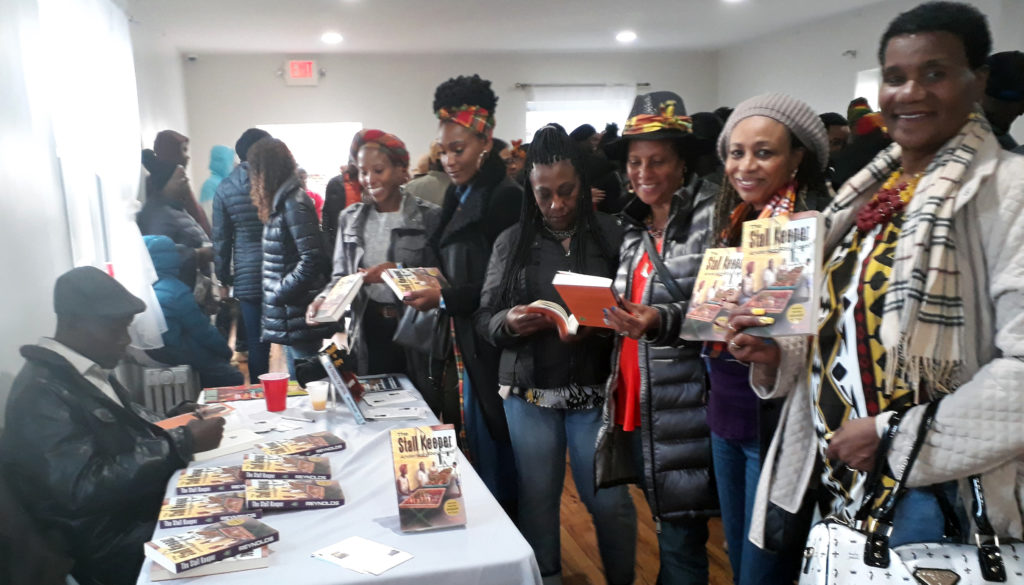 At his St. Lucia House Foundation 2018 Jounen Kweyol Day book signing, Dr. Reynolds said he couldn’t help but muse over the longevity, survivability, and portability of culture. Watching the large, colorful, boisterous crowd of St. Lucians rekindle their cultural roots with a live folk band, a large variety of Creole dishes, and popular St. Lucian inebriating drinks, notwithstanding the chilly weather he could almost forget he wasn’t in St. Lucia.
At his St. Lucia House Foundation 2018 Jounen Kweyol Day book signing, Dr. Reynolds said he couldn’t help but muse over the longevity, survivability, and portability of culture. Watching the large, colorful, boisterous crowd of St. Lucians rekindle their cultural roots with a live folk band, a large variety of Creole dishes, and popular St. Lucian inebriating drinks, notwithstanding the chilly weather he could almost forget he wasn’t in St. Lucia.
He said the event brought to mind his earlier book reading and signing in Los Angeles, where during the question and answer segment a young lady said that she agreed with Rick Wayne’s criticism of St. Lucians for wearing African outfits when that was never part of their culture. A middle-aged gentleman responded that, if we so desire, why can’t we wear African outfits? Africa is where we came from, and African culture has always been with us; it didn’t die with slavery. It’s in how we speak, what we eat, how we socialize, and it’s in the music we create. He went on to say that although Rick Wayne’s achievements in sports can be considered as great as those of our Nobel Laureates in their respective fields of endeavor, he is doing St. Lucia a big disfavor in continuing to denigrate St. Lucians and their culture.
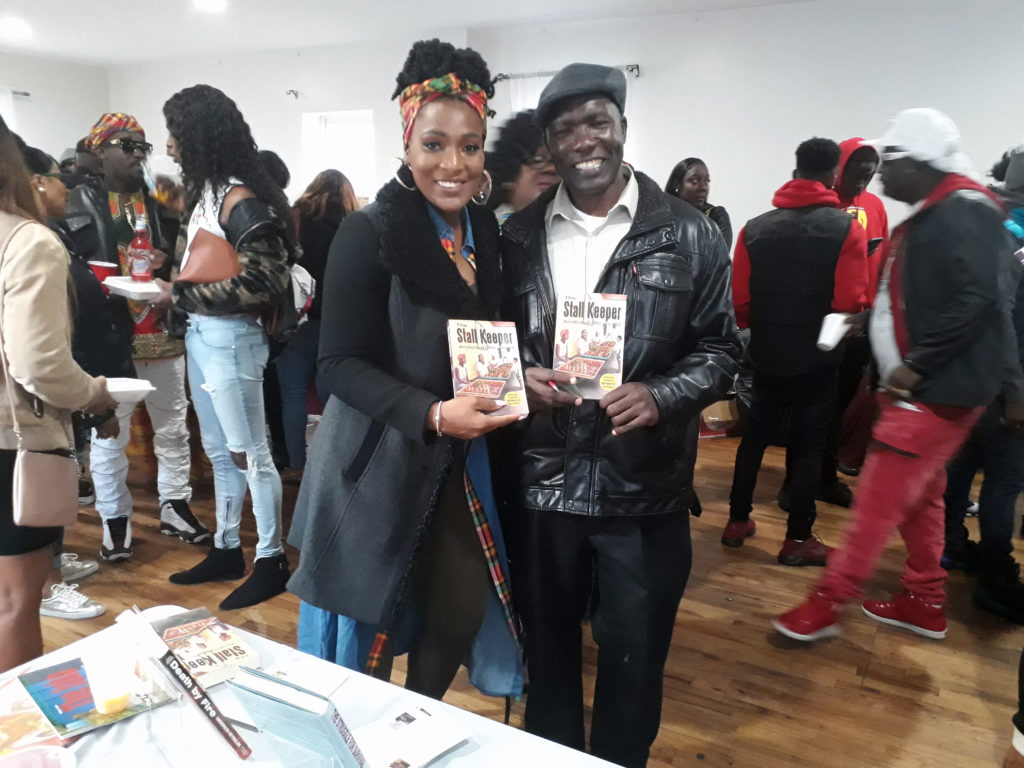 Dr. Reynolds said he couldn’t have agreed more with the gentleman, for in one of his poems, The Kilimanjaro, he gave voice to this very sentiment— “The music and the map of Africa set me thinking: / what spirit / what obeah / what voodoo / what magic / has Africa placed on its children that nothing; /not slavery / not colonialism / not imperialism / could take Africa out of her children?
Dr. Reynolds said he couldn’t have agreed more with the gentleman, for in one of his poems, The Kilimanjaro, he gave voice to this very sentiment— “The music and the map of Africa set me thinking: / what spirit / what obeah / what voodoo / what magic / has Africa placed on its children that nothing; /not slavery / not colonialism / not imperialism / could take Africa out of her children?
The St. Lucian House Jounen Kweyol festivity also brought home to the author that the St. Lucian cultural space doesn’t end with the island’s physical boundary but expands across Europe and North America, the world even, though more concentrated in cities like New York, Miami, Toronto, London, and Atlanta.
Dr. Reynolds was also struck by the notion that the island’s cultural output has implications beyond its shores because it is this cultural output, this national cultural expression, that is feeding and keeping alive St. Lucian culture beyond its shores. For example, carnival and Jounen Kweyol activities in the diaspora are patterned after what takes place in St. Lucia, and it is the music generated in St. Lucia and in other Caribbean countries that fuels these festivities, providing an example of how culture travels and spreads and thrives thousands of miles from its original source.
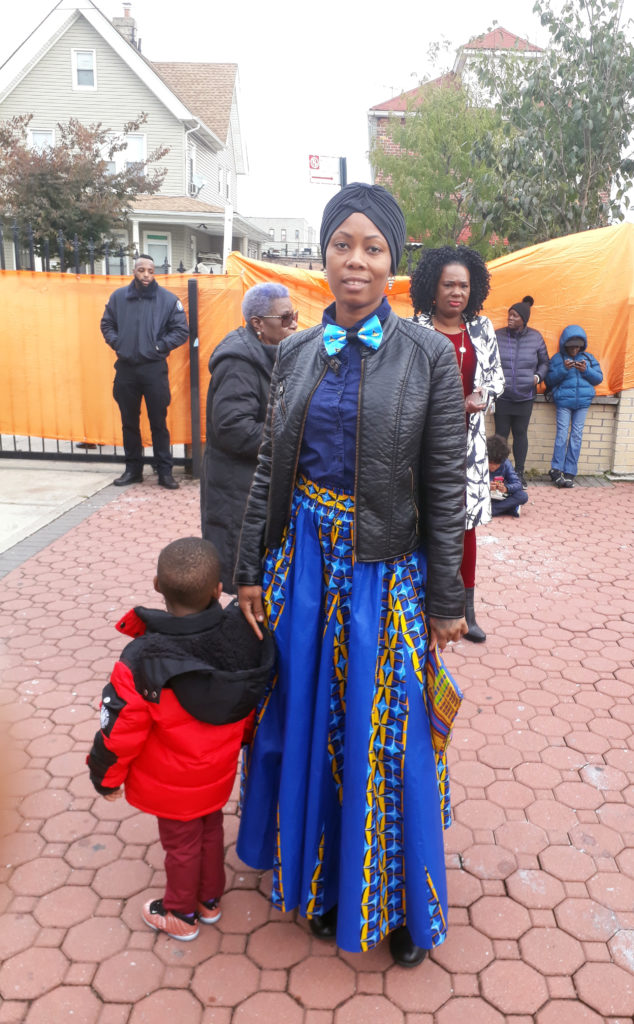 But Dr. Reynolds said it isn’t always a one-way street. Sometimes the diaspora gives rise to cultural innovations that are exported back to the original source. For example, it was the UK that gave lovers rock its name and crystalized it into a sub reggae genre; and it was in the US that reggae and dub gave rise to rap and hip-hop. Sometimes a traditional cultural practice is preserved in the diaspora in its purer form, while at the source it transforms into something else, so it is in the diaspora, thousands of miles away, where one may need to go to reacquaint with tradition.
But Dr. Reynolds said it isn’t always a one-way street. Sometimes the diaspora gives rise to cultural innovations that are exported back to the original source. For example, it was the UK that gave lovers rock its name and crystalized it into a sub reggae genre; and it was in the US that reggae and dub gave rise to rap and hip-hop. Sometimes a traditional cultural practice is preserved in the diaspora in its purer form, while at the source it transforms into something else, so it is in the diaspora, thousands of miles away, where one may need to go to reacquaint with tradition.
The author said he was happy to be part of New York’s Jounen Kweyol activities, not only to muse about culture and to enjoy the good food and music and the company of fellow St. Lucian but also because his participation as an author helped make sure that St. Lucian literature is celebrated as part of the cultural mix. For in the midst of the music, eating, drinking, and folk fashion, it is easy to forget that our cultural expressions also include paintings (visual arts), theatre and dance (performing arts), and literature.
The award-winning author said that St. Lucia has made its biggest strides and has had the greatest impact on the world in the areas of literature, theatre, and painting. For example, consider that Sir Derek Walcott captured for St. Lucia the Nobel Prize, the very pinnacle of the literary world; and under the creative leadership of his brother, Roderick Walcott, the St. Lucia Arts Guild (1950-1971) led the way in West Indian theatre, and, according to Sir Dunstan St. Omer, set off a West Indian cultural revolution. Consider also, Llewellyn Xavier and Sir Dunstan St. Omer, both of whom having made their mark as world renown painters.
According to Dr. Reynolds, exposure to St. Lucia art and literature would give young St. Lucians growing up in the diaspora a deeper understanding and appreciation of their homeland and its way of life which would help keep them grounded and serve as a counterbalance to the culture of their adopted countries.
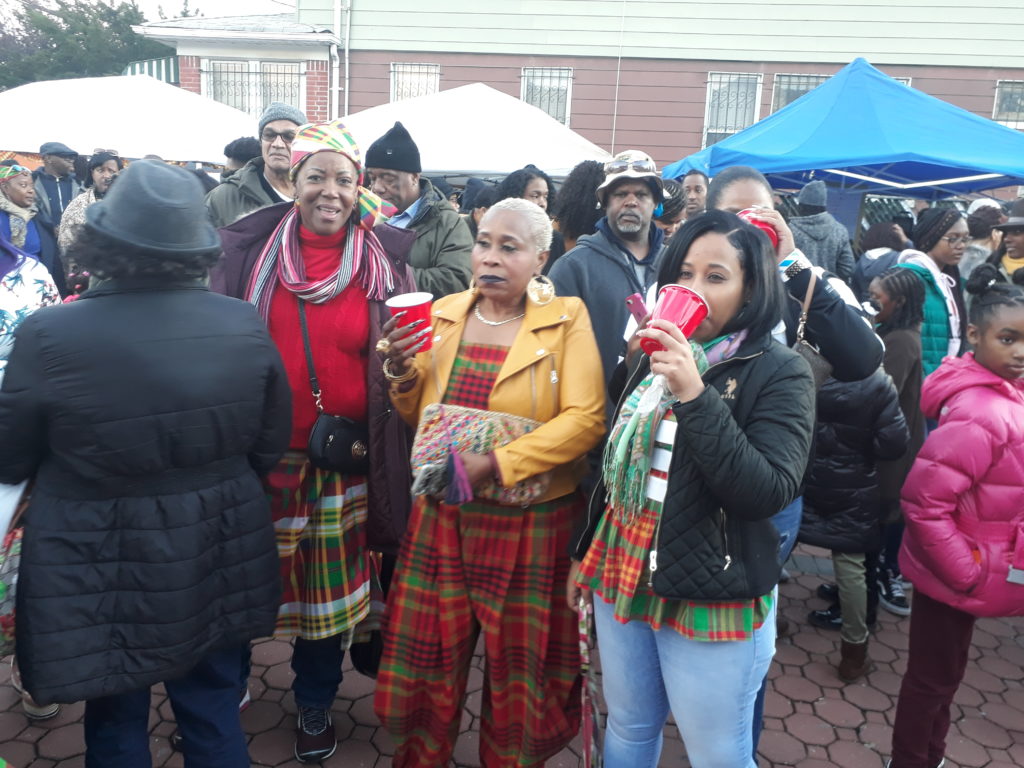 Dr. Reynolds would like to thank the Jounen Kweyol audience for their support and encouragement, and the St. Lucia House Foundation and the St. Lucia New York Consulate for facilitating his participation in New York’s Jounen Kweyol Day celebrations.
Dr. Reynolds would like to thank the Jounen Kweyol audience for their support and encouragement, and the St. Lucia House Foundation and the St. Lucia New York Consulate for facilitating his participation in New York’s Jounen Kweyol Day celebrations.
Readers and fans of Dr. Reynolds who didn’t get the opportunity to meet him during his 2017 book tour and during his recent stops in Los Angeles and New York, may have another opportunity next year when he embarks on another international book tour with the publication of his fourth book, the memoir My Father Is No Longer There.
![]()


